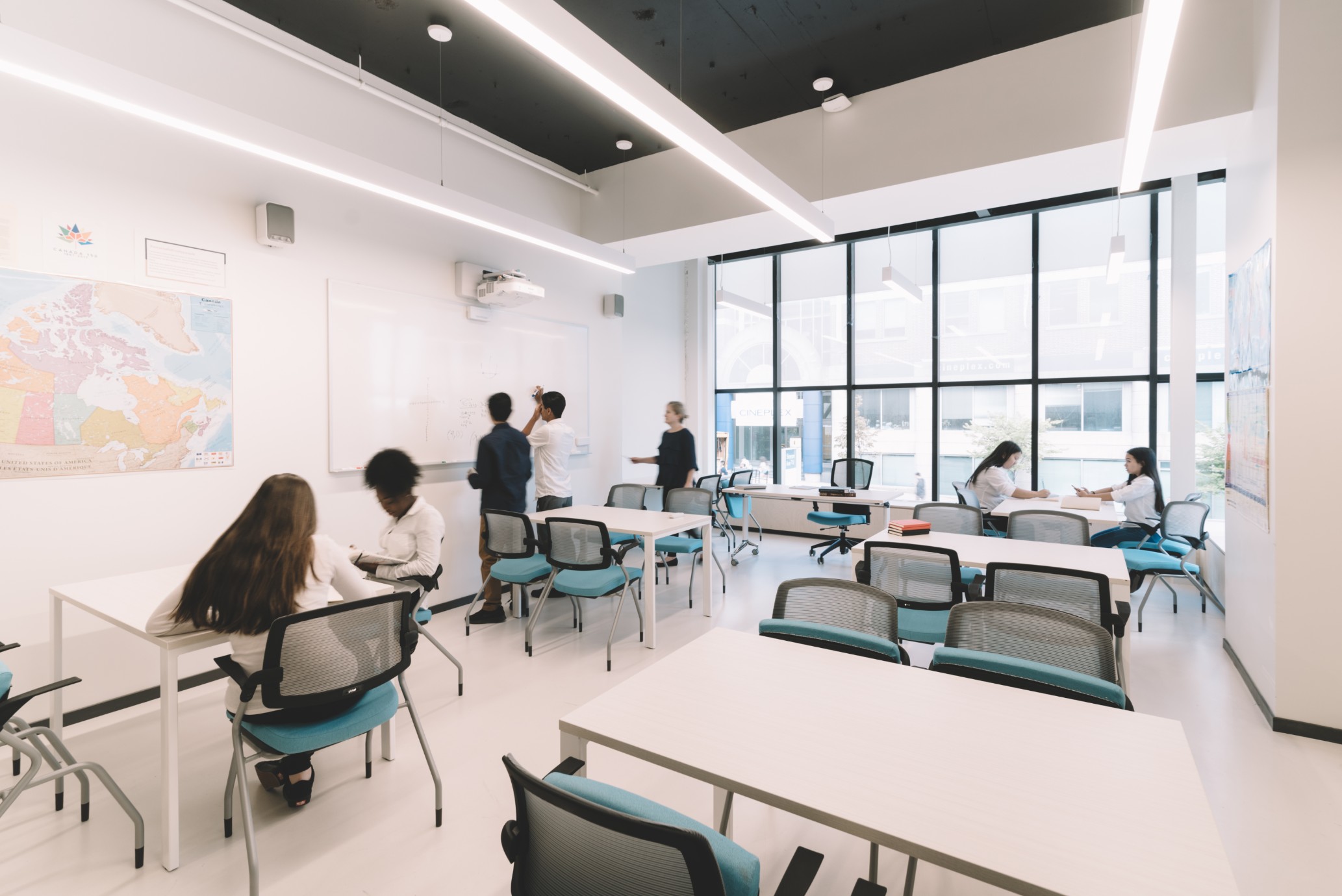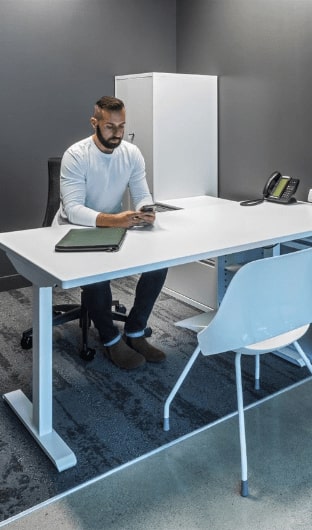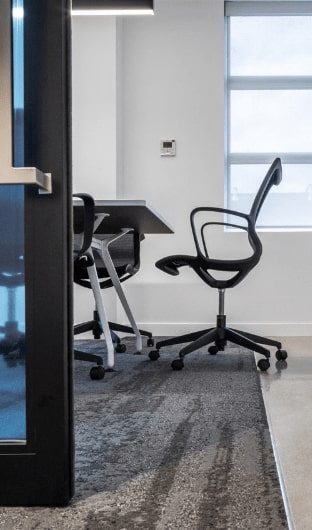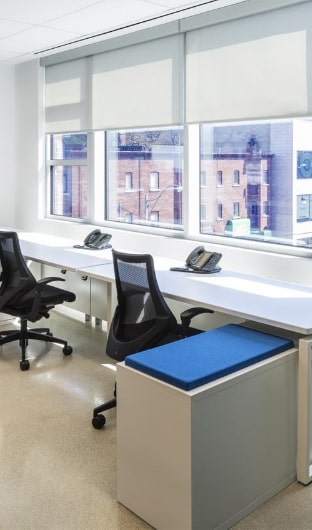
How To Choose The Right Education Furniture
Choosing the right education furniture is crucial for creating a conducive learning environment. The design and layout of furniture in educational settings can significantly impact students’ focus, comfort, and overall learning experience.
Ergonomically designed chairs and desks can promote good posture and reduce physical discomfort, allowing students to concentrate better during lessons. Additionally, well-organized furniture arrangements can facilitate collaboration among students and interaction with teachers, fostering a more engaging and interactive learning environment. Making informed choices ensures that educational institutions provide students with comfortable and inspiring settings for effective learning experiences. Read the latest article from Harkel Office to learn how investing in suitable education furniture can enhance the overall learning experience and support the academic success of students.
Importance Of Educational Furniture
The right selection of furniture can boost student engagement and productivity, leading to better academic outcomes. Choosing appropriate educational furniture requires understanding students’ needs and requirements. It involves considering factors like age group, activities conducted in the space, and any specific needs of students with disabilities or special requirements. By aligning furniture choices with these considerations, educators can create a comfortable and functional space that supports diverse learning styles.
Things To Consider
- Student Needs: Prioritize comfort and functionality when selecting furniture.
- Space Utilization: Ensure that the furniture fits well within the available space without overcrowding the space.
- Durability: Opt for sturdy materials that can withstand daily wear and tear.
- Flexibility: Choose modular or adjustable furniture pieces that can be easily adapted to different teaching methods or classroom layouts.
Factors To Consider In Choosing Education Furniture
Safety Considerations
The right educational furniture should prioritize safety, ensuring students are protected from accidents. For example, sturdy chairs and tables can prevent tipping over, reducing the risk of injuries, while rounded edges on furniture pieces can contribute to creating a safer learning environment.
When selecting the right school furniture, it’s also crucial to consider factors like durability and stability. For instance, chairs with non-slip feet can provide stability on various floor types, preventing slips or falls.
Flexibility and Budget Constraints
In choosing the right education furniture, flexibility is key to accommodating diverse teaching methods and activities. Desks that can be easily rearranged into different configurations promote collaborative learning environments. Moreover, opting for multi-functional furniture pieces maximizes space utilization in classrooms.
Considering budget constraints is another important factor for educational institutions. Institutions can explore cost-effective options such as buying in bulk or purchasing durable furniture that requires less frequent replacement due to wear and tear.
Importance of Ergonomics in Classroom Furniture
Promoting Proper Posture
Ergonomics, an important part of classroom furniture, ensures students maintain good posture. This reduces the risk of musculoskeletal disorders caused by poor seating positions.
Adjustable desks and chairs are key features that can allow students to customize their seating arrangements. By adapting the furniture to suit their needs, students can achieve maximum comfort while studying.
Enhancing Concentration and Focus
Ergonomically designed classroom furniture plays a crucial role in improving student concentration and focus. Studies have shown that comfortable seating leads to better engagement in lessons and tasks.
Incorporating ergonomic features into school furniture helps create a conducive learning environment. Students can concentrate better when they are comfortable, leading to increased productivity during class time.
Selecting the Right Size and Style for Classrooms
Classroom Layout Considerations
Classroom size plays a crucial role in determining the right education furniture. The quantity and arrangement of furniture should align with the dimensions of the room to optimize space utilization. For instance, smaller classrooms might benefit from compact desks or tables to allow for easy movement.
Considering specific needs based on age groups is also essential when selecting furniture. Younger students will require smaller chairs and tables compared to older students. Adapting furniture sizes according to developmental stages can enhance comfort and support proper posture during learning activities.
Aesthetics and Design Impact
The aesthetics and design of classroom furniture can significantly impact the learning environment. Choosing colours that promote focus, such as calming blues or greens, can create a conducive atmosphere for concentration. Incorporating modern school design trends into furniture selection can contribute to an engaging and inspiring educational setting.
Creating Comfortable Learning Environments
Seating Options
Comfortable seating, like cushioned chairs or bean bags, can enhance student engagement and focus during lessons. When choosing educational furniture, consider ergonomic designs that support good posture.
Providing options for flexible seating arrangements also caters to active learning environments, allowing students to choose the setup that works best for them.
Storage Solutions
Effective storage solutions are crucial in maintaining an organized classroom environment. By keeping clutter at bay, students can better concentrate on their work without unnecessary distractions.
Consider furniture pieces with built-in storage compartments or shelves to keep supplies neatly stored away while remaining easily accessible for both teachers and students.
Durability and Functionality in Educational Furniture
Longevity and Cost-Efficiency
Investing in durable education furniture is crucial as it ensures longevity, reducing the need for frequent replacements. This leads to cost savings over time, benefiting educational institutions by allocating resources effectively.
Durable furniture withstands the daily wear and tear of a classroom environment, ensuring that it remains functional for an extended period. By choosing sturdy desks and chairs made from high-quality materials, institutions can avoid constant repairs or replacements, focusing resources on enhancing the learning experience instead.
Maximizing Efficiency with Multi-Functional Furniture
Functionality plays a key role in selecting educational furniture. Opting for multi-functional pieces such as desks with built-in storage compartments or whiteboard surfaces enhances classroom efficiency by maximizing space utilization. These versatile furniture items cater to various needs within a compact area, promoting organization and productivity among students.
Creating Flexible Learning Spaces
Creating flexible learning spaces with movable furniture enables educators to adapt their teaching methods easily. Movable desks and chairs allow for quick reconfiguration of the classroom layout based on different activities or teaching styles. This versatility accommodates various learning needs and preferences among students. For instance, rearranging seats into a circle promotes open discussions and enhances student participation.
Tips for Maximizing Learning Potential Through Furniture Selection
Involving Stakeholders
Engaging teachers and students in the decision-making process is crucial. By understanding their specific needs and preferences, schools can choose the right furniture that caters to everyone’s requirements. For instance, teachers may need ergonomic chairs for long hours of standing, while students might benefit from adjustable desks to accommodate various learning styles.
Researching Trends
Staying updated on the latest educational furniture options and innovations is also vital. Schools should conduct thorough research to explore new trends that enhance learning environments. For example, recently flexible seating arrangements have gained popularity for promoting collaboration and active learning among students.
Researching current trends in educational furniture helps schools make informed decisions when selecting items that align with modern teaching methods. This proactive approach ensures that classrooms are equipped with innovative solutions designed to maximize student engagement and comfort.
In conclusion, choosing the right educational furniture is a crucial decision that directly impacts the learning environment and student experience. By understanding the factors, such as ergonomics, size, style, durability, and functionality, educational institutions can create comfortable and conducive spaces for effective learning. It is essential to prioritize quality and functionality while also considering the aesthetic and ergonomic aspects to enhance the overall learning experience. By following these guidelines and tips, educational institutions can maximize their learning potential through thoughtful furniture selection.
For institutions looking to improve their learning environments, it is imperative to invest time and effort into selecting appropriate furniture that aligns with students’ needs and supports their educational journey. Making informed decisions based on the factors discussed will not only benefit students but also contribute to a more engaging and productive classroom setting. Connect with Harkel Office – a leading education furniture supplier in Ontario to create an effective learning space today.





